Who
Nick Polumbus, President of Whitefish Mountain Resort, Montana
Recorded on
January 13, 2023
About Whitefish
Click here for a mountain stats overview
Owned by: Winter Sports, Inc.
Pass affiliations: None
Reciprocal pass partners:
3 days each at Great Divide, Loveland, Mt. Hood Meadows
5 days at Red Lodge
Located in: Whitefish, Montana
Closest neighboring ski areas: Blacktail (1 hour, 15 minutes), Fernie (2 hours), Turner (2 hours, 30 minutes), Kimberley (2 hours, 45 minutes), Montana Snowbowl (3 hours), Lookout Pass (3 hours) – travel times will vary considerably pending weather, border traffic, and time of year
Base elevation: 4,464 feet
Summit elevation: 6,817 feet
Vertical drop: 2,353 feet
Skiable Acres: roughly 3,000 acres
Average annual snowfall: nearly 300 inches
Trail count: 128 (8 expert, 49 advanced, 40 intermediate, 25 beginner, 6 terrain parks)
Lift count: 15 (1 six-pack, 3 high-speed quads, 2 fixed-grip quads, 6 triples, 2 T-bars, 1 carpet)

Why I interviewed him
You can be forgiven for thinking that Epkon chewed them all up. That the only ski areas worth skiing are those stacked on the industry’s twin magic carpets. These shuttles to something grand, to what you think of when you think about the mountains. Ikon got Jackson and Palisades and the Cottonwoods and Taos. Epic got Vail and Telluride and Heavenly and Park City. What more could be left? What more could you need?
You probably need this. Whitefish. Or Big Mountain, as you will. Three thousand acres of Montana steep and white. Plenty of snow. Plenty of lifts. A new sixer to boom you up the hillside. The rootin’-tootin’ town below. A C-note gets you a lift ticket and change to buy a brew. No bitterness in the exchange.
It’s hard to say exactly if Whitefish is an anachronism or an anomaly or a portent or a manifestation of wanton Montana swagger. Among big, developed U.S. mountains, it certainly stands alone.

This model is extinct, I thought. Coercion-by-punishment being the preferred sales tactic of the big-mountain conglomerates. “Four lift tickets for today, Mr. Suburban Dad who decided to shepherd the children to Colorado on a last-minute spring break trip? That will be $1,200. Oh does that seem like a lot to you? Well that will teach you not to purchase access to skiing 13 months in advance.”
So far, Whitefish has resisted skiing’s worst idea. Good for them. Better for them: this appears to be a winning business strategy. Skier visits have climbed annually for more than a decade. Look at a map and you’ll see that’s more impressive than it sounds. Whitefish is parked at the top of America, near nothing, on the way to nothing. You have to go there on purpose. And with Epic and Ikon passes tumbling out of every other skier’s jacket pockets, you need a special story to bait that journey.
So what’s going on here? Why hasn’t this mountain done what every other mountain has done and joined a pass? Like the comely maiden at the ball, Whitefish could have its pick: Epic, Ikon, Mountain Collective, Indy. An instant headliner and pass-mover. But the single life can be appealing. Do as you please, chill with who you want, set your own agenda. That’s Whitefish’s game. And I’m watching.
What we talked about
Why Whitefish typically calls it a season with a 100-inch summit base depth; Front Range Colorado and I-70 in the 1970s; how Colorado and Utah snow and traffic impacts skier traffic at Whitefish; how a Colorado kid enters the ski industry in Vermont; a business turnaround at Whitefish; “get the old fish out of the fridge”; how Whitefish has stayed affordable as it’s modernized; why the ski area changed its name from “Big Mountain” and how that landed locally; who owns Whitefish and how committed they are to independence; the new Snow Ghost Express sixer; ripple effects on other chairlifts after Snow Ghost popped live; record skier visits; snow ghosts; the best marketing line of Polumbus’ career; a big-time potential future expansion; the mountain’s recent chairlift shuffles; why chairs 5 and 8 don’t go to the summit; the art of terrain-pod building; why Bad Rock isn’t running this winter; thoughts on the future of Tenderfoot and the Heritage T-bar; Why Whitefish lift tickets cost a fraction of what similarly sized mountains charge; an amazing season pass stat; the mountain’s steady rise of skier visits; and much love for the Indy Pass even if it “isn’t a good fit for us.”
Why I thought that now was a good time for this interview
Well I actually thought that January was a great time for this interview. Which is why I recorded it then. And here it is in your inbox, a mere 11 weeks later. Which is a bad look for me and a bad look for the brand and not very considerate to my guest. I’ll offer an explanation, but not an excuse: the sound quality on this recording was, um, not good. Most podcasts take two to four hours to edit. This one required 10 times that. So why didn’t I just blast it out back in January? Since so much of what I write is reaction to breaking news, every hour I spend on a pod is an hour I’m not delivering more urgent content. And most Storm Skiing Podcasts are fairly evergreen. Skiers binge them on long roadtrips – I know this because they tell me so and because the numbers keep going up on eps that I dropped back in 2019.
But none of that matters to you or to the team at Whitefish, and it shouldn’t. I know that a lot of you have been waiting for this one since I started hyping it last year, and this long delay was disappointing. I get it. One core promise of The Storm, however, is that I will continually improve the product and the process. So I’ll own this one and refine my workflow to prevent future delays. Sorry.
But, to address the actual purpose of this section: why did I think that now was a good time for this interview? It’s everything I said above. Alterra has copied Vail’s ridiculous day-ticket price structure, and Boyne and Powdr aren’t far behind. Even little Mountain Capital Partners is allowing the robots to price-surge Arizona Snowbowl tickets past the $300 mark on peak days. Whitefish doesn’t exactly stand alone in resisting these price schemes – plenty of other ski areas will still sell you a walk-up lift ticket that costs less than a heart transplant. But none are as large, as high-profile, and as modern as Whitefish – at least not in our beloved U.S. America. Like some brash hipster rocking a Walkman on his fixed-gear bicycle, Whitefish has made the once-pedestrian into the novel. Innovation by staying in place.
The Epic Pass gets a lot of well-deserved credit for stabilizing skiing by front-loading pass sales to springtime, insulating revenue from weather-dependency. But Vail and Alterra have cast the $250-plus lift ticket as an essential piece of their passes’ success. As though no one would buy the pass if they knew they could still go ski Beaver Creek for $100 anytime they liked. There is a brutal logic to this. You’re only going to buy a $275 lift ticket one time. Then you’ll go looking for hacks. But the process is demeaning and embarrassing, like you’re the last guy to the gas pump in the apocalypse.
I wrote a story on Whitefish’s business model back in 2021, profiling both that mountain and Jay Peak. Both are run, perhaps coincidentally, by headmen who are fist-bump bros that came up together at late-ASC Killington in the ‘90s: Polumbus and Jay Peak’s Steve Wright. I don’t know how much they brought their brains together to arrive at similar ticket menus, but I know from interacting with both that they share the same kind of heart. A down-to-earth humility and empathy that considers humans in the business equation, rather than just making them the number at the transactional finish line.
Why you should ski Whitefish
Did you see the part above about 3,000 acres of terrain and 300 inches of average annual snowfall? Yeah, go enjoy that.
But let me harp on the lift ticket thing just a little bit more. If your boys are anything like mine, they are more likely to translate War and Peace into Braille than they are to heed your advice to purchase lift tickets 10 months before your next ski trip. I say this not because my friends are brilliant, but because they are lazy assholes who need their wives to label their underwear drawers lest they be forced to go commando for months on end. So if you’re planning, say, “Gary’s 50th Birthday Ski Adventure,” you have choices: Heavenly (South Tahoe!), Jackson (Jackson!), Telluride (Telluride!), etc. My buddies, mostly Three-Day Dans, are going to ignore my clear and repeated reminders to purchase Epic Day or Mountain Collective Passes, and are instead going to commandeer their monthly car payment to cover the cost of two days’ skiing. And then be all shocked and annoyed about it. Whitefish, where even last-minute skiing runs less than $100 per day, is the solution to such gatherings.
That’s an edge case, I realize. And surely there are attributes of skiing Whitefish beyond the low cost at the turnstile: the terrain, the views, the snowghosts, the unpretentious vibe, the snowfall, the enormous breadth of it all. But the price thing matters enormously. If you have an Ikon Pass and you’re passing through Park City, you’re probably not stopping to scope the place out. Throwing down $269 for a day of skiing seems a little stupid if you have unlimited skiing on a $1,000-plus pass that you already own. But if you’re rolling from Sun Peaks down to Big Sky and you want to sidebar to Whitefish, well, that lift ticket’s not going to kill you in the same way. That sort of pop-around spontaneity defined a big piece of the road-trip ski scene for decades, and it’s fading. Too bad.
Podcast Notes
On American Skiing Company and S-K-I
Polumbus refers to the S-K-I and American Skiing Company (ASC) Merger, which roughly coincided with the beginning of his Killington tenure in 1996. Check this crazy portfolio, as documented by New England Ski History:
At the time of the deal, both companies only had New England ski areas, with LBO Resort Enterprises' portfolio composed of Attitash Bear Peak, NH, Cranmore, NH, Sugarbush, VT, and Sunday River, ME, while S-K-I Ltd. owned Haystack, VT, Killington, VT, Mt. Snow, VT, Sugarloaf, ME, and Waterville Valley, NH.
Can you imagine if that crew had held into the megapass era? Instead, they are split between seven different owners:
The coalition didn’t hold for long. The Justice department made ASC sell Cranmore and Waterville Valley immediately. And even though the company was like “F you Brah” and purchased Pico five minutes later, and went on to purchase The Canyons (then Wolf Mountain, formerly Park West, now part of Park City), Steamboat, and Heavenly, the whole enterprise disintegrated in slow motion over the next dozen years. New England Ski History documents the company’s arc comprehensively:
On lift shuffles
Whitefish moves lifts around its mountain like some of us re-organize our living room couches. Check out the 2005 front-side trailmap on the left. By 2007, the Glacier Chaser Express had been shortened and slid looker’s left to replace the old Swift Creek double, and the Easy Rider triple had moved down-mountain and become Elk Meadows. The new Easy Rider, a quad seated across the mountain, was also a relocated machine, from Moab Scenic Skyway, according to Lift Blog.
In 2017, Whitefish moved Glacier View, a 1981 CTEC triple, to a new location and renamed it East Rim:
Then last year, Whitefish moved the Hellroaring triple looker’s left across the mountain. Note the changes in the trail network below Lacey Lane, which ran under the old line:
Amazingly, that was the second time Whitefish had relocated that same chair. It began life in 1985 as the Big Creek chairlift, which served the North Side in this circa 1995 trailmap:
The Storm publishes year-round, and guarantees 100 articles per year. This is article 27/100 in 2023, and number 413 since launching on Oct. 13, 2019. Want to send feedback? Reply to this email and I will answer (unless you sound insane, or, more likely, I just get busy). You can also email skiing@substack.com.




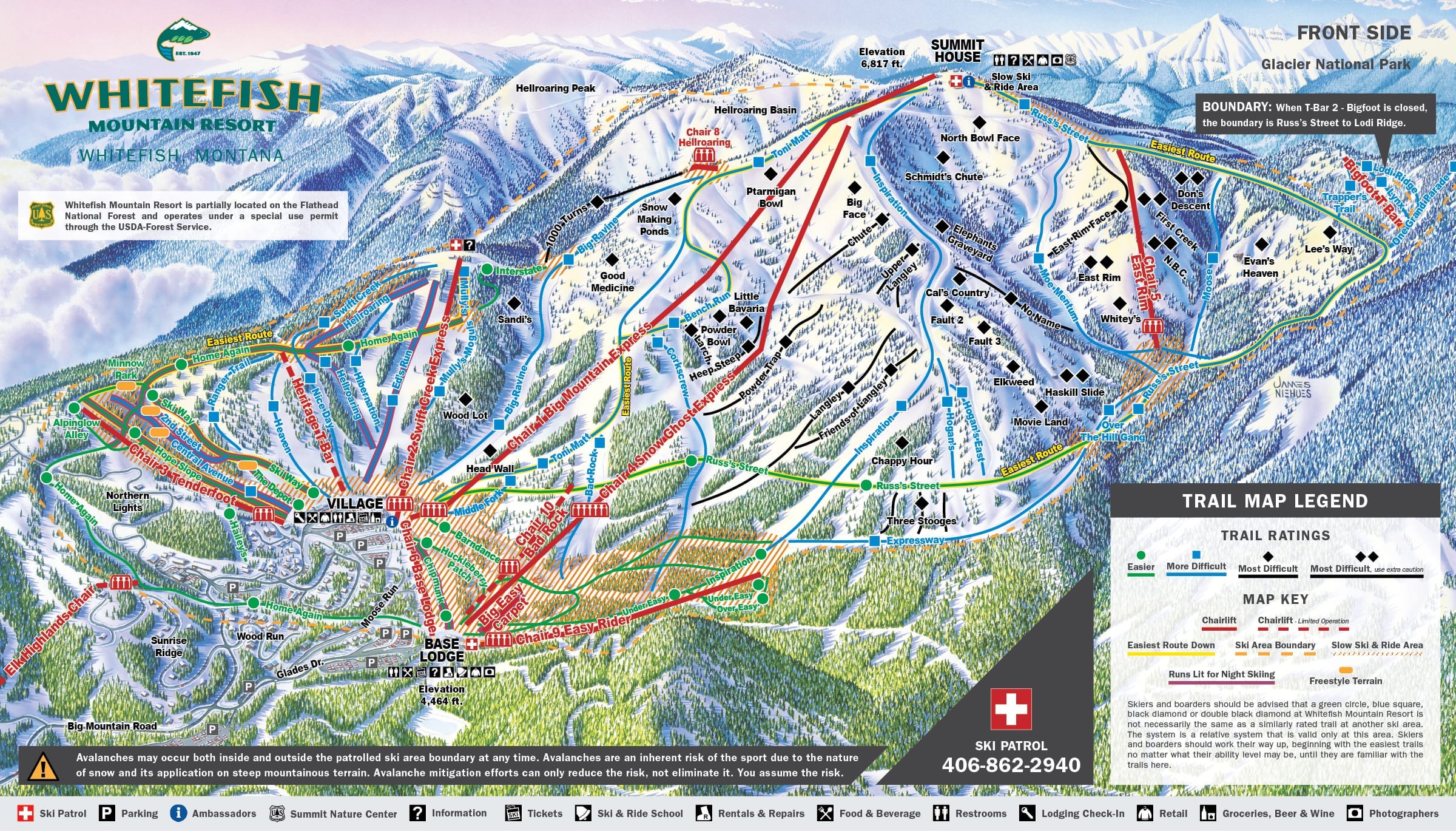
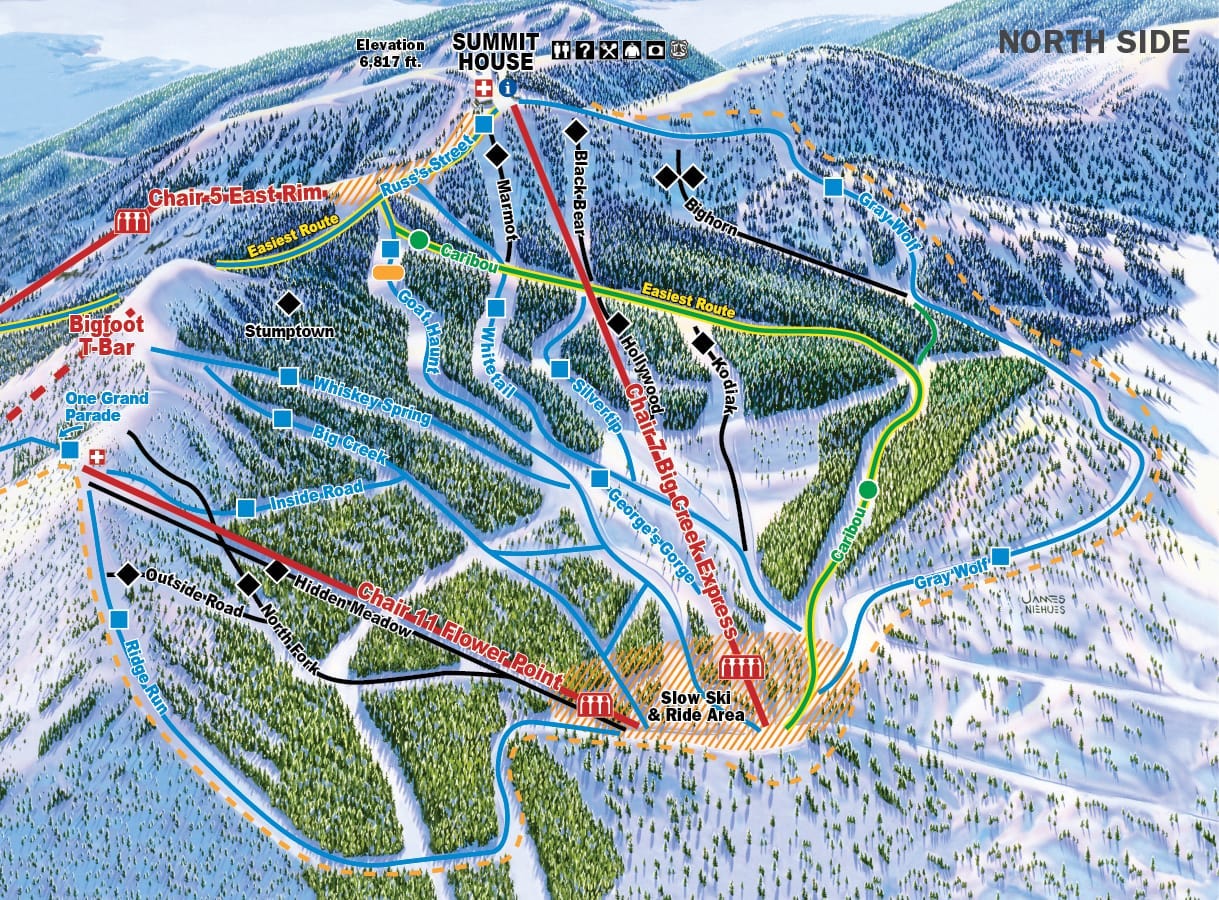

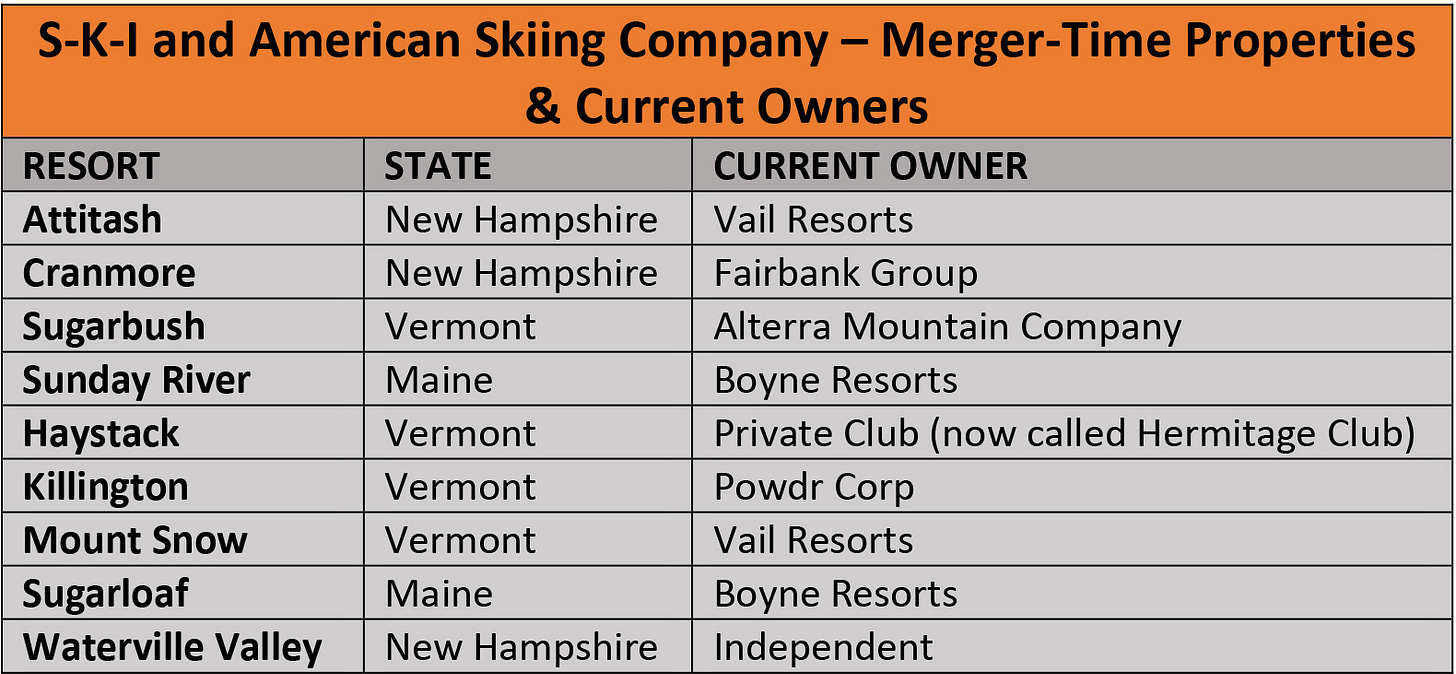
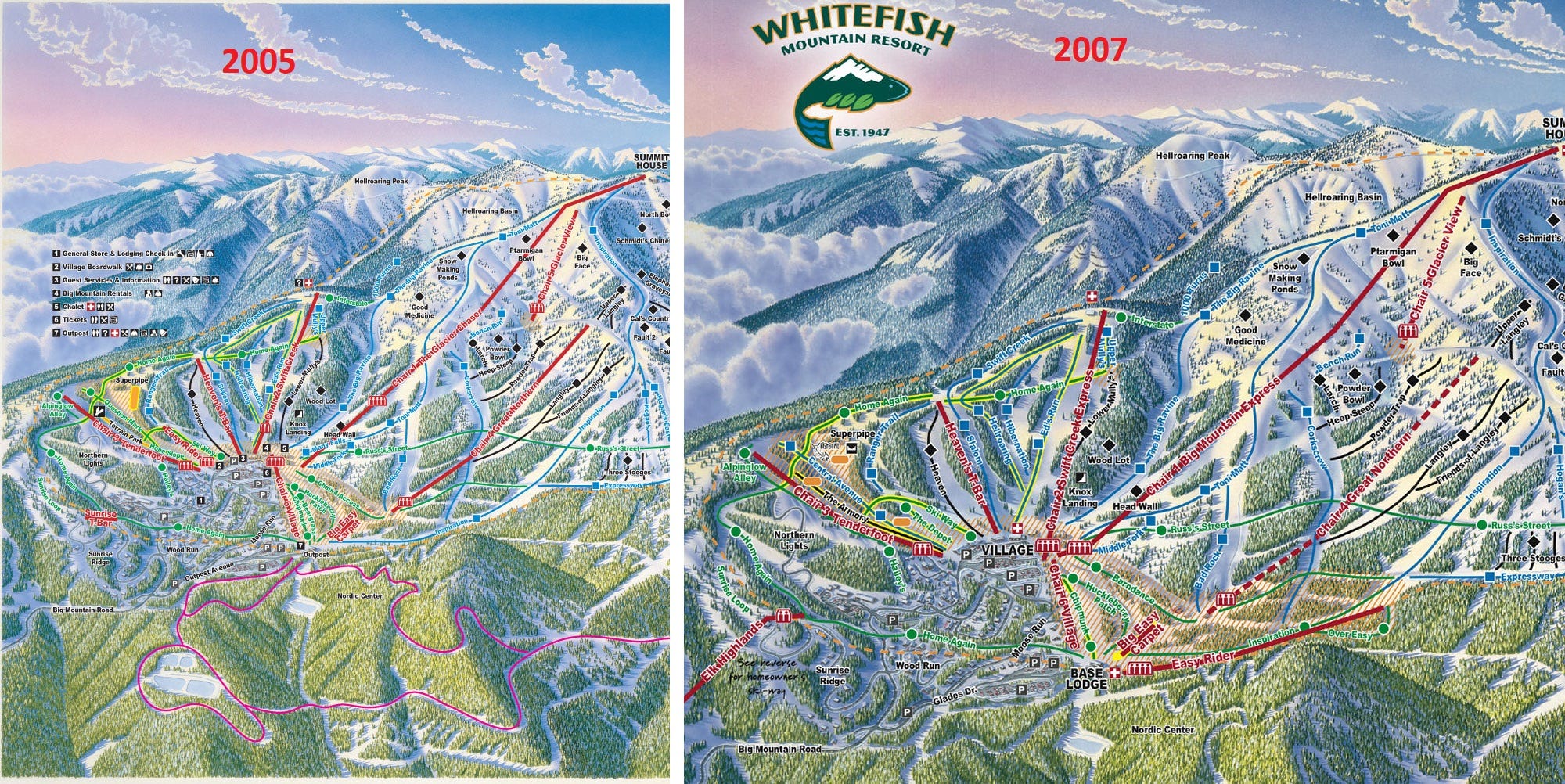

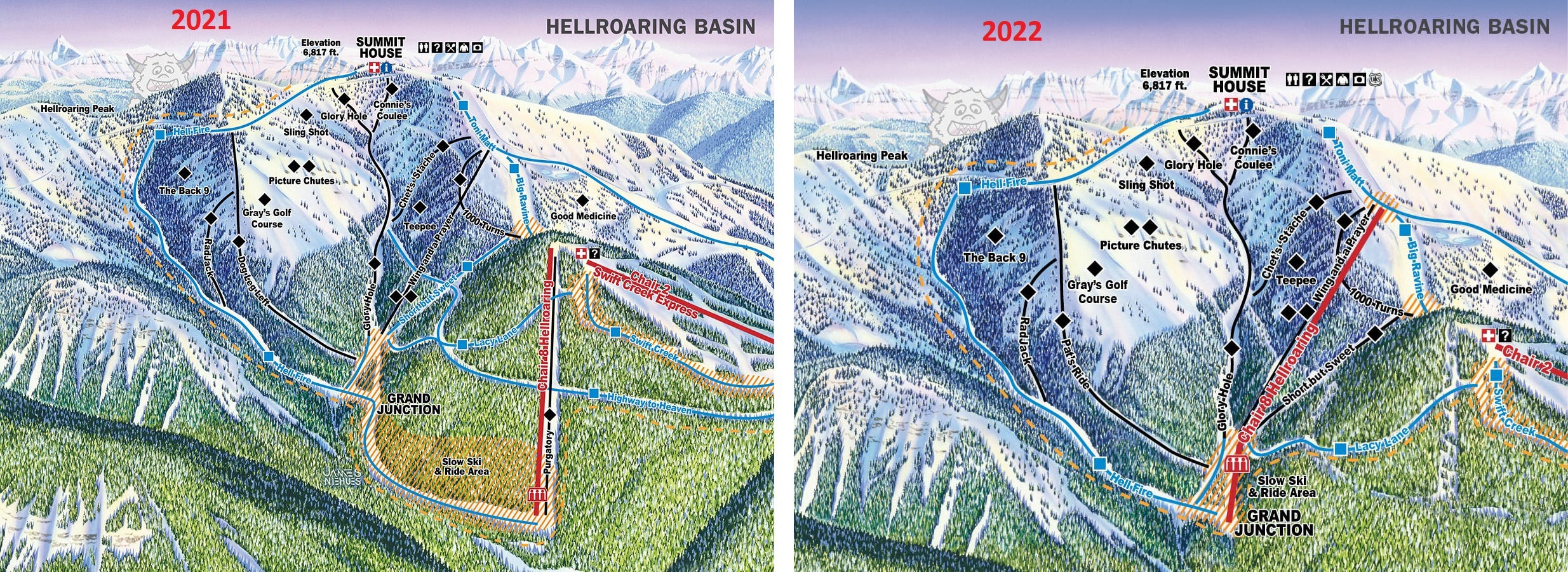
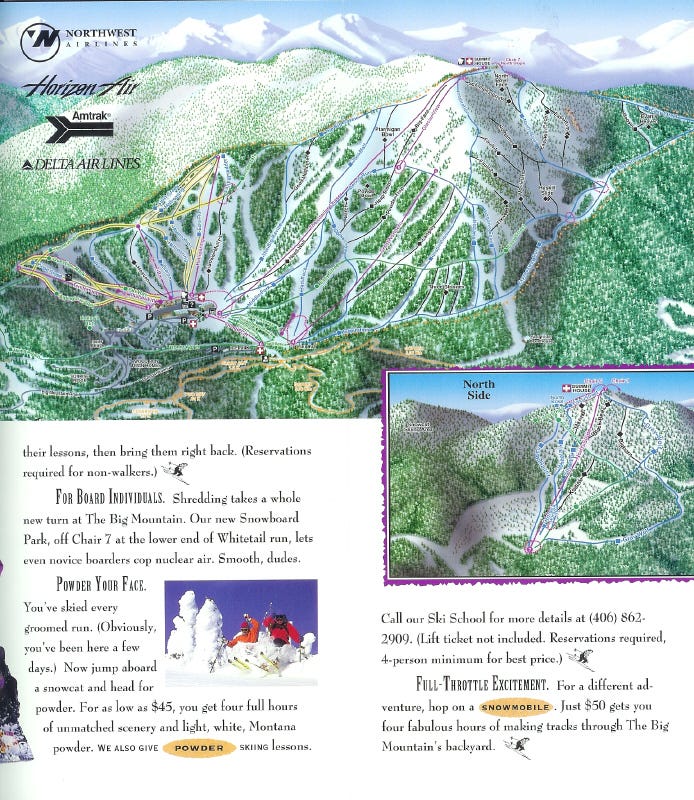






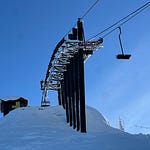


Share this post